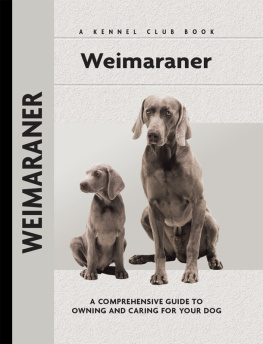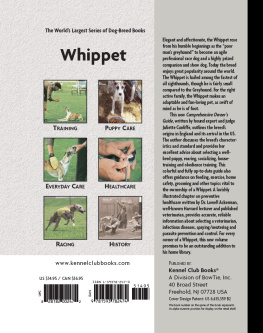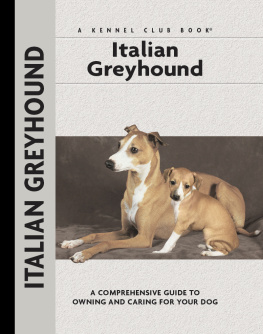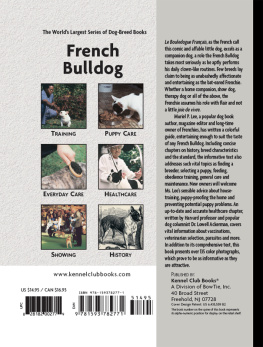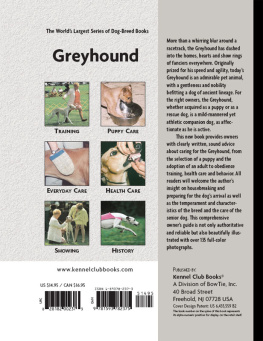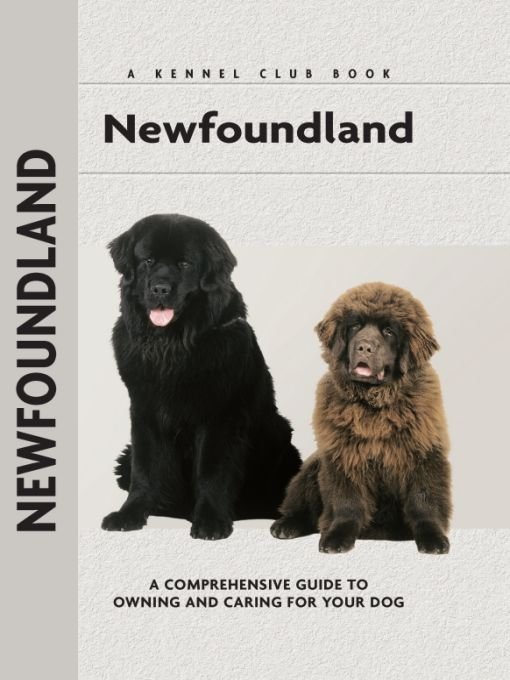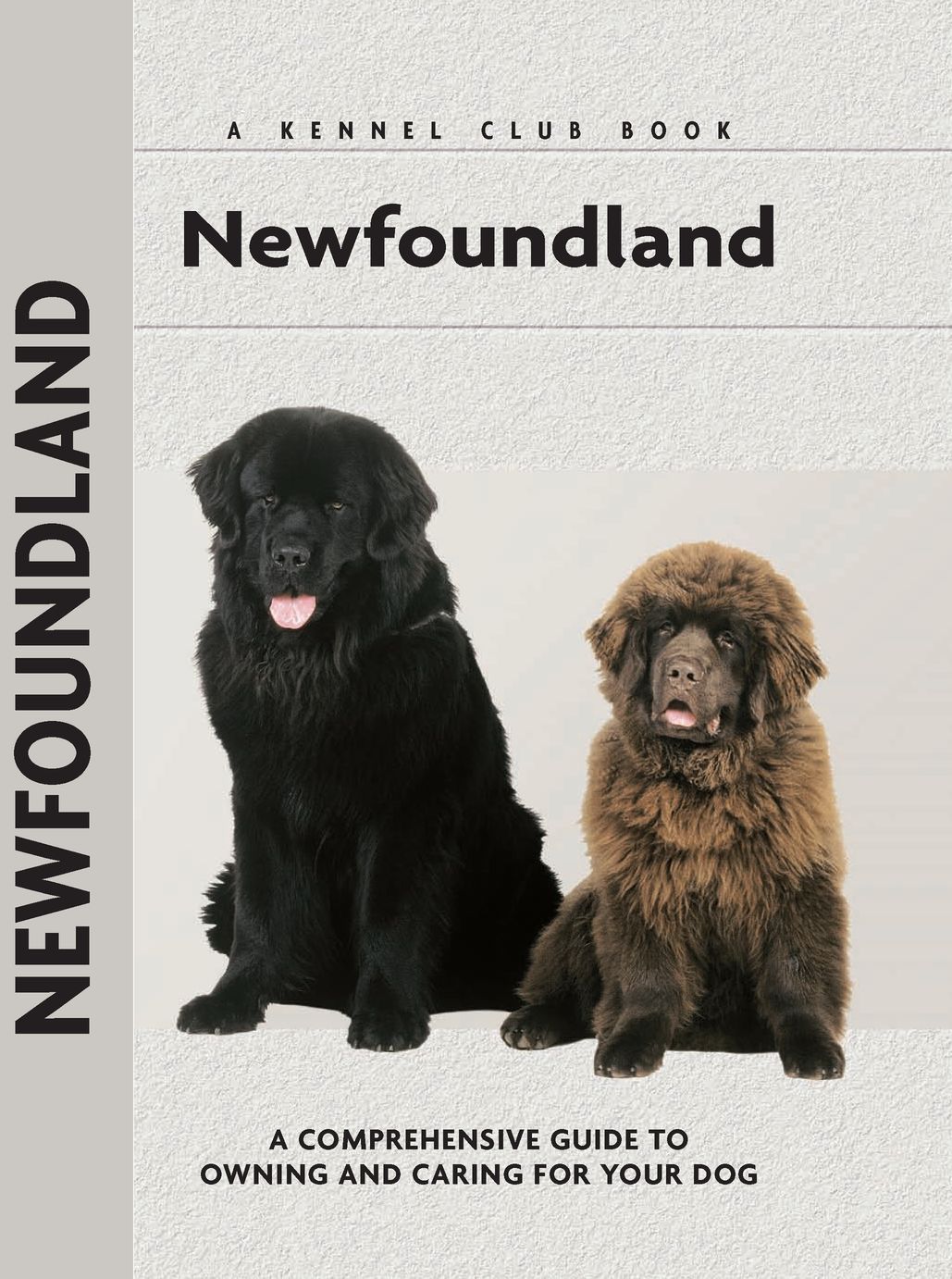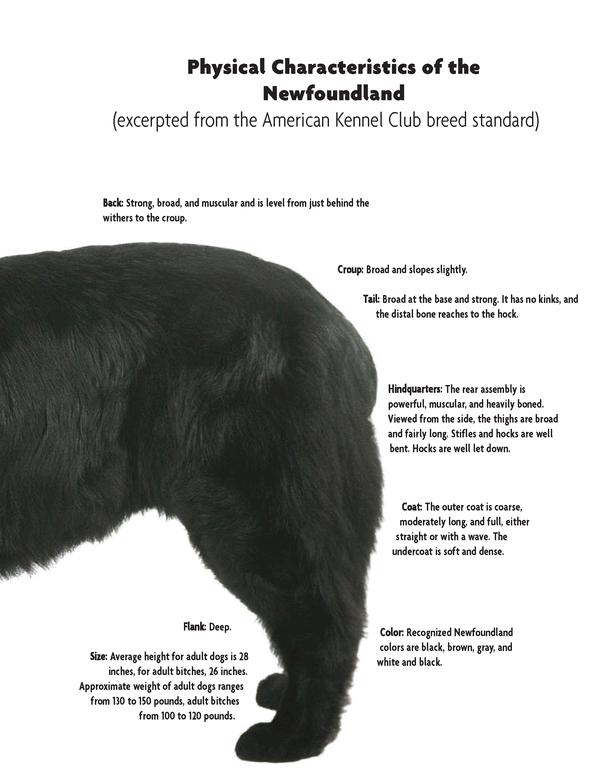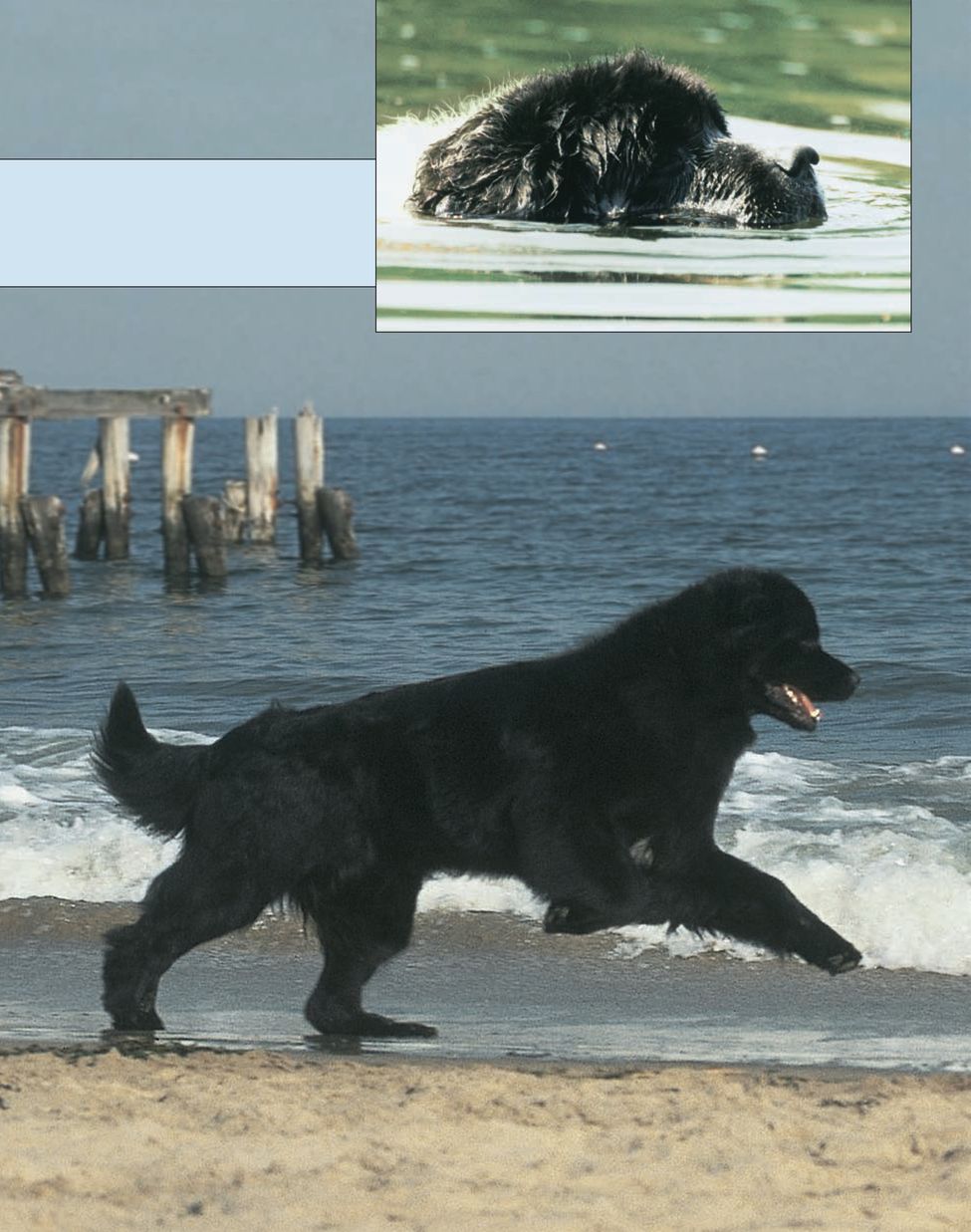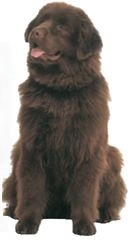Table of Contents
The gentle giant is a renowned water rescuer, blessed with a buoyant personality and swimming ability.
HISTORY OF THE
NEWFOUNDLAND
The Newfoundland is frequently called the gentle giant among dogs. He is a large and imposing dog whose massive size belies his sweet and noble temperament. The kindly Newfoundland is a sweet and devoted family companion. He is a faithful friend who will protect children and, indeed, his entire human family, as well as risk his life to rescue a stranger from disaster. Blessed with a willing and hard-working nature, the versatile Newfoundland will make every effort to please his owner at whatever task presents itself.
The origin of the Newfoundland has always been the subject of much speculation. One theory suggests that the Newfoundland evolved from the Tibetan Mastiff, an ancient breed that accompanied Asian warriors on their journey across the Asian continent, eventually entering North America at Newfoundland.
A second theory suggests a cross-breeding between Mastiffs, Pyrenean Sheepdogs and Portuguese Water Dogs sometime during the 15th and 16th centuries. In fact, these and other breeds are believed to have been used and cross-bred by the native Beothuk Indians to aid them with their fishing chores.
Another widely accepted theory holds that the breed descended from what were known as Bear Dogs, large working dogs that were brought over to the North American continent by Leif Ericsson and the Vikings in 1000 AD. Other accounts claim that when the Vikings visited Newfoundland during the second century, they witnessed the native fishermen working side-by-side with large black retrieving dogs. Further speculation suggests that those dogs were eventually interbred and cross-bred with the native wolves.
Whatever the true beginnings, the actual history of the Newfoundland will forever remain a matter of conjecture, adding to the mystique and majesty that surrounds this unique breed of dog.
HONORABLE MENTION
A plaque erected in Swansea, South Wales, honors a Newfoundland named Swansea Jack, who saved 27 people from drowning at Swansea in 1937.
The great Irish Ch. Milk Boy, who did so much to bring the breed to the attention of the Irish and English. Circa 1932.
The first documented record of a breed resembling the Newfoundland can be found in records of that country dating back to the 1600s, when dogs of their description were traded by North American residents. The dog served primarily as a ship dog in Newfoundland, rendering a wide variety of services to his seagoing human caretakers.
Fishing was the primary industry in Newfoundland at that time, and every fishing boat carried at least one Newfoundland dog as an important member of the crew. The Newf was blessed with great lung capacity and powerful swimming ability, enabling him to fight strong ocean currents and swim long distances. His ship chores included hauling the fishing nets from the boat and then back once they were full. Easily large enough to rescue a drowning man, he frequently rescued people who had fallen into the sea.
The early seagoing dogs were transported in pens in galleys called the dog walk. Their principal function aboard ship was to swim ashore with a boat line to aid in docking if a choppy sea prevented the ship from mooring at a designated shore. In similar fashion, during a disaster, the Newf also carried lifelines out to sinking ships to help save the victims from death at sea. Reports of Newfoundlands who rescued drowning victims or small boats are legendary in ancient naval history.
Tales of Newfoundland heroism also can be found in history books. A Newfie accompanied Napoleon Bonaparte on board his ship on his return to France from Elba. When Napoleon fell overboard into the dark waters and could not be located by his crew, the Newf dove off the deck to rescue the waterlogged emperor.
LIFEGUARD DOG
The Newfoundland was sometimes called the Lifeguard Dog because of his many legendary life-saving feats in which he saved people from drowning.
A Newfoundland was aboard the ill-fated Titanic when it sank. Another Newfoundland was awarded the Meritorious Service medal by Lloyds of London for rescuing an entire shipful of people in 1919. It comes as no surprise that a Newfoundland was chosen to accompany Lewis and Clark on their famous river expedition to the Pacific northwestern coast of North America in 1803.
The Newfoundlands role as helpmate did not end when his fishing boat tied up at dockside. The dog was hitched up to a cart, the days catch loaded, and he hauled the fish to town. Newfs also pulled milk delivery wagons and hauled firewood, leaves and other supplies, which often weighed up to 450 pounds, for great distances. Their docile nature and strong work ethic were great assets to the residents of these towns as well as to the seafaring community.
It is thought that as many as 2000 Newfoundlands were owned and actively working in the town of St. Johns in Newfoundland by the early 1800s. Their jobs included hauling cut firewood from the forests, pulling in the fishing nets and hauling cartloads of fish from the docks. The dogs worked singly and in teams of three to five dogs, and were so conditioned to their specified routes that they could deliver their wares without human aid or intervention and then return to their homes to receive rewards of their favorite fooddried fish.
Daventry Coastguard was a Canadian dog that took high honors. When only ten months old, he had just two more points to win to become a full champion. Circa 1934.
Newfoundlands were also pressed into service as postmen, delivering the mail between railway stations and to a chain of outpost settlements. Over frozen terrain, through dense forests and under harsh conditions too difficult for equine travel, hardy Newfoundlands labored in teams of up to seven dogs to deliver His Majestys mail. In honor of their distinguished service to their country, the King of Newfoundland commissioned a postage stamp emblazoned with the head of the Newfoundland.
In Germany in the 1920s, the Newfoundland was of a much heavier type than the Newfs seen elsewhere. This dog was a German champion.


